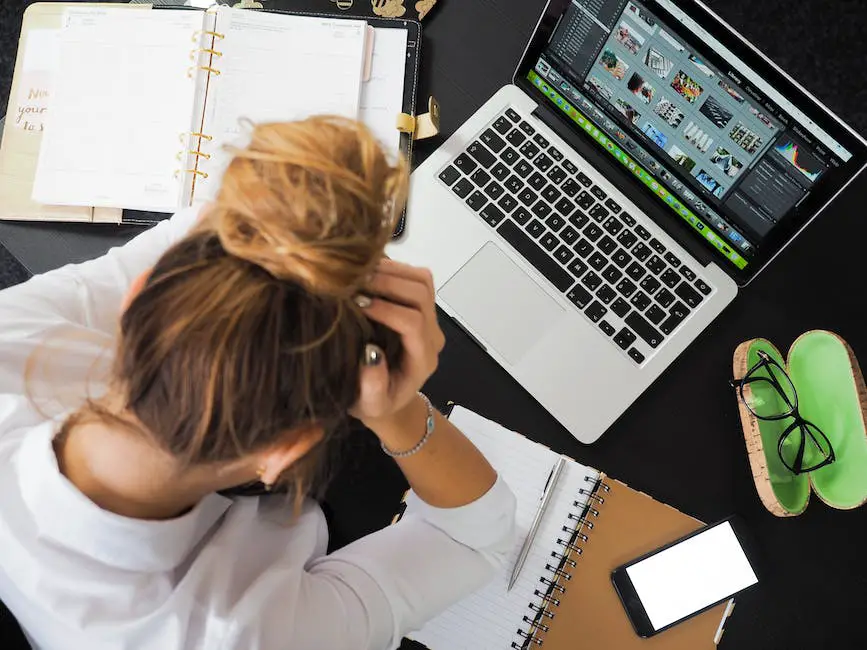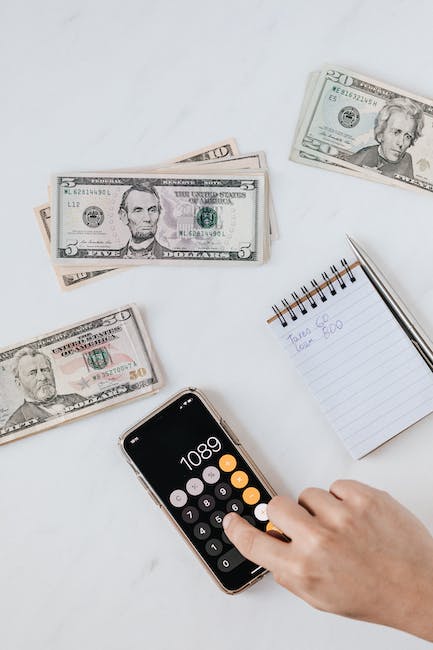-
Table of Contents
- Introduction
- The Relationship Between Unemployment and Inflation
- The Phillips Curve: Exploring the Connection Between Unemployment and Inflation
- The Impact of Unemployment on Inflation Rates
- Unemployment and Inflation: A Historical Perspective
- Policy Responses to Unemployment and Inflation: Lessons from the Past
- Q&A
- Conclusion
Introduction
Unemployment and inflation are two of the most important economic indicators that affect the overall health of an economy. Unemployment refers to the number of people who are actively seeking employment but are unable to find work. Inflation, on the other hand, refers to the rate at which the general level of prices for goods and services is rising. The relationship between unemployment and inflation is complex and has been the subject of much debate among economists. In this article, we will explore how unemployment affects inflation and vice versa.
The Relationship Between Unemployment and Inflation
Unemployment and inflation are two of the most important economic indicators that are closely monitored by policymakers, economists, and investors. These two indicators are interrelated, and changes in one can have a significant impact on the other. In this article, we will explore the relationship between unemployment and inflation and how unemployment affects inflation.
Unemployment is a measure of the number of people who are willing and able to work but are unable to find employment. It is an important economic indicator because it reflects the health of the labor market and the overall economy. When unemployment is high, it means that there are more people looking for work than there are jobs available. This can lead to a decrease in consumer spending, which can have a negative impact on the economy.
Inflation, on the other hand, is a measure of the rate at which prices for goods and services are increasing. It is an important economic indicator because it reflects the purchasing power of consumers and the overall health of the economy. When inflation is high, it means that the cost of living is increasing, which can lead to a decrease in consumer spending and a decrease in economic growth.
The relationship between unemployment and inflation is complex and can be influenced by a variety of factors. One of the most important factors is the level of aggregate demand in the economy. When aggregate demand is high, it means that there is a high level of consumer spending, which can lead to an increase in prices and inflation. Conversely, when aggregate demand is low, it means that there is a low level of consumer spending, which can lead to a decrease in prices and deflation.
Another important factor that can influence the relationship between unemployment and inflation is the level of productivity in the economy. When productivity is high, it means that businesses are able to produce more goods and services with the same amount of resources, which can lead to a decrease in prices and inflation. Conversely, when productivity is low, it means that businesses are not able to produce as much with the same amount of resources, which can lead to an increase in prices and inflation.
So, how does unemployment affect inflation? The answer to this question depends on the specific circumstances of the economy. In general, when unemployment is high, it means that there are more people looking for work than there are jobs available. This can lead to a decrease in consumer spending, which can lead to a decrease in aggregate demand and a decrease in prices. This is known as deflation.
However, there are also situations where high unemployment can lead to an increase in inflation. This can happen when there is a shortage of skilled workers in certain industries, which can lead to an increase in wages and production costs. This increase in production costs can then be passed on to consumers in the form of higher prices, leading to inflation.
In conclusion, the relationship between unemployment and inflation is complex and can be influenced by a variety of factors. While high unemployment can lead to a decrease in prices and deflation, it can also lead to an increase in inflation in certain circumstances. Policymakers and economists must carefully monitor these indicators and take appropriate action to ensure that the economy remains stable and healthy.
The Phillips Curve: Exploring the Connection Between Unemployment and Inflation
The Phillips Curve is a concept that explores the relationship between unemployment and inflation. It was first introduced by economist A.W. Phillips in 1958, and it has since become a fundamental tool for policymakers and economists alike. The Phillips Curve suggests that there is an inverse relationship between unemployment and inflation. In other words, when unemployment is low, inflation tends to be high, and when unemployment is high, inflation tends to be low.
The logic behind the Phillips Curve is straightforward. When unemployment is low, there are fewer people looking for work, and employers have to compete for a smaller pool of workers. This competition drives up wages, which in turn drives up prices. As a result, inflation tends to be higher when unemployment is low. Conversely, when unemployment is high, there are more people looking for work than there are jobs available. This puts downward pressure on wages, which in turn puts downward pressure on prices. As a result, inflation tends to be lower when unemployment is high.
The Phillips Curve has been a useful tool for policymakers because it suggests that there is a trade-off between unemployment and inflation. If policymakers want to reduce inflation, they can do so by increasing unemployment. Conversely, if they want to reduce unemployment, they can do so by accepting higher inflation. This trade-off is known as the “Phillips Curve trade-off.”
However, the Phillips Curve has come under scrutiny in recent years. Some economists have argued that the relationship between unemployment and inflation is not as strong as it once was. They point to periods of high inflation and high unemployment, such as the stagflation of the 1970s, as evidence that the Phillips Curve is not always reliable.
One possible explanation for this is that the Phillips Curve is based on a simplified view of the economy. It assumes that all other factors that affect inflation, such as productivity, technology, and international trade, remain constant. In reality, these factors are constantly changing, and they can have a significant impact on inflation.
Another possible explanation is that the Phillips Curve is based on a short-term view of the economy. It assumes that changes in unemployment will have an immediate impact on inflation. In reality, the impact of changes in unemployment on inflation can take months or even years to materialize.
Despite these criticisms, the Phillips Curve remains a useful tool for policymakers. It provides a framework for understanding the relationship between unemployment and inflation, and it can help policymakers make informed decisions about monetary policy. However, it is important to remember that the Phillips Curve is just one tool among many, and it should be used in conjunction with other economic indicators and models.
In conclusion, the Phillips Curve is a concept that explores the relationship between unemployment and inflation. It suggests that there is an inverse relationship between the two, and it has been a useful tool for policymakers for many years. However, the Phillips Curve has come under scrutiny in recent years, and some economists have questioned its reliability. Despite these criticisms, the Phillips Curve remains a useful tool for policymakers, but it should be used in conjunction with other economic indicators and models.
The Impact of Unemployment on Inflation Rates
Unemployment and inflation are two of the most significant economic indicators that affect the overall health of an economy. Unemployment refers to the number of people who are actively seeking employment but are unable to find work. Inflation, on the other hand, refers to the rate at which the general price level of goods and services in an economy is increasing. The relationship between unemployment and inflation is complex, and economists have been studying it for decades.
One of the most widely accepted theories in economics is the Phillips curve, which suggests that there is an inverse relationship between unemployment and inflation. According to this theory, when unemployment is high, inflation is low, and when unemployment is low, inflation is high. The Phillips curve is based on the idea that when there are more job openings than there are people looking for work, employers have to compete for workers by offering higher wages. This leads to an increase in the cost of production, which is then passed on to consumers in the form of higher prices.
However, the Phillips curve has been challenged in recent years, as some countries have experienced both high unemployment and high inflation at the same time. This phenomenon is known as stagflation and was first observed in the 1970s. Stagflation occurs when there is a supply shock, such as an increase in oil prices, that leads to higher production costs and lower output. This results in both higher prices and higher unemployment.
Another factor that can affect the relationship between unemployment and inflation is the level of economic growth. When an economy is growing, there is usually an increase in demand for goods and services, which can lead to higher prices. However, if the economy is growing too quickly, it can lead to a shortage of workers, which can drive up wages and production costs. This can lead to higher inflation, even if unemployment is low.
In addition to economic growth, other factors that can affect the relationship between unemployment and inflation include government policies and international trade. For example, if a government implements policies that increase the cost of production, such as higher taxes or regulations, it can lead to higher prices and inflation. Similarly, if a country experiences a trade deficit, it can lead to a decrease in the value of its currency, which can lead to higher prices for imported goods and services.
Overall, the relationship between unemployment and inflation is complex and can be affected by a variety of factors. While the Phillips curve suggests that there is an inverse relationship between the two, this relationship can be disrupted by supply shocks, economic growth, government policies, and international trade. Understanding the relationship between unemployment and inflation is essential for policymakers, as it can help them make informed decisions about monetary and fiscal policy. By carefully monitoring these indicators, policymakers can help ensure that the economy remains stable and healthy over the long term.
Unemployment and Inflation: A Historical Perspective
Unemployment and inflation are two of the most important economic indicators that are closely monitored by policymakers, economists, and investors. These two indicators are often interrelated, and changes in one can have a significant impact on the other. In this article, we will explore the historical relationship between unemployment and inflation and how unemployment affects inflation.
Historically, the relationship between unemployment and inflation has been described by the Phillips curve. The Phillips curve is a graphical representation of the inverse relationship between unemployment and inflation. According to the Phillips curve, when unemployment is low, inflation tends to be high, and when unemployment is high, inflation tends to be low. This relationship was first observed by economist A.W. Phillips in the 1950s and has been the subject of much debate and analysis ever since.
The Phillips curve suggests that there is a trade-off between unemployment and inflation. When unemployment is low, there is a shortage of workers, and employers must compete for workers by offering higher wages. This leads to an increase in the cost of production, which is passed on to consumers in the form of higher prices. On the other hand, when unemployment is high, there is a surplus of workers, and employers have more bargaining power. This leads to lower wages and lower production costs, which can result in lower prices.
However, the Phillips curve has been criticized for its oversimplification of the relationship between unemployment and inflation. In the 1970s, the Phillips curve broke down when the economy experienced both high unemployment and high inflation, a phenomenon known as stagflation. This led economists to question the validity of the Phillips curve and to search for alternative explanations for the relationship between unemployment and inflation.
One alternative explanation for the relationship between unemployment and inflation is the natural rate of unemployment theory. According to this theory, there is a natural rate of unemployment that is determined by structural factors such as demographics, technology, and labor market institutions. When unemployment is below the natural rate, inflation tends to be high, and when unemployment is above the natural rate, inflation tends to be low. This theory suggests that policymakers should focus on reducing the natural rate of unemployment rather than trying to manipulate the trade-off between unemployment and inflation.
So, how does unemployment affect inflation? The answer depends on the specific circumstances of the economy. In general, when unemployment is low, there is upward pressure on wages and prices, which can lead to higher inflation. Conversely, when unemployment is high, there is downward pressure on wages and prices, which can lead to lower inflation. However, this relationship is not always straightforward, and other factors such as productivity, technology, and monetary policy can also influence inflation.
In conclusion, the relationship between unemployment and inflation is complex and multifaceted. While the Phillips curve provides a useful framework for understanding the relationship between these two indicators, it has limitations and should be used with caution. The natural rate of unemployment theory provides a more nuanced explanation for the relationship between unemployment and inflation and suggests that policymakers should focus on reducing the natural rate of unemployment rather than trying to manipulate the trade-off between unemployment and inflation. Ultimately, the relationship between unemployment and inflation depends on a variety of factors, and policymakers must carefully consider these factors when making decisions that affect the economy.
Policy Responses to Unemployment and Inflation: Lessons from the Past
Unemployment and inflation are two of the most significant economic issues that policymakers face. Both have a significant impact on the economy, and policymakers must find ways to address them effectively. One of the most critical questions that policymakers must answer is how unemployment affects inflation.
Unemployment and inflation are closely related. When unemployment is high, there is less demand for goods and services, which can lead to lower prices. This is because businesses are competing for a smaller pool of customers, and they must lower their prices to attract them. This can lead to deflation, which is a decrease in the general price level of goods and services.
On the other hand, when unemployment is low, there is more demand for goods and services, which can lead to higher prices. This is because businesses are competing for a larger pool of customers, and they can charge higher prices because customers are willing to pay more. This can lead to inflation, which is an increase in the general price level of goods and services.
The relationship between unemployment and inflation is known as the Phillips curve. The Phillips curve shows the inverse relationship between unemployment and inflation. When unemployment is high, inflation is low, and when unemployment is low, inflation is high.
However, the Phillips curve is not always accurate. There have been times when unemployment and inflation have both been high, such as during the 1970s. This is known as stagflation, and it is a challenging economic situation to address.
Policymakers have several tools at their disposal to address unemployment and inflation. One of the most common tools is monetary policy. Monetary policy involves adjusting the money supply and interest rates to influence economic activity. When inflation is high, policymakers can raise interest rates to reduce demand for goods and services, which can help lower prices. When unemployment is high, policymakers can lower interest rates to stimulate demand for goods and services, which can help create jobs.
Fiscal policy is another tool that policymakers can use to address unemployment and inflation. Fiscal policy involves adjusting government spending and taxation to influence economic activity. When unemployment is high, policymakers can increase government spending to create jobs and stimulate demand for goods and services. When inflation is high, policymakers can reduce government spending and increase taxes to reduce demand for goods and services.
There are also supply-side policies that policymakers can use to address unemployment and inflation. Supply-side policies involve increasing the supply of goods and services to stimulate economic activity. This can include measures such as deregulation, tax cuts, and investment in infrastructure.
In conclusion, unemployment and inflation are closely related, and policymakers must find ways to address them effectively. The Phillips curve shows the inverse relationship between unemployment and inflation, but it is not always accurate. Policymakers have several tools at their disposal to address unemployment and inflation, including monetary policy, fiscal policy, and supply-side policies. By using these tools effectively, policymakers can help create a stable and prosperous economy.
Q&A
1. How does unemployment affect inflation?
Unemployment can affect inflation by influencing the supply and demand of goods and services in the economy. When unemployment is high, there is less demand for goods and services, which can lead to lower prices and lower inflation. Conversely, when unemployment is low, there is more demand for goods and services, which can lead to higher prices and higher inflation.
2. What is the relationship between unemployment and inflation?
The relationship between unemployment and inflation is often referred to as the Phillips curve. The Phillips curve suggests that there is an inverse relationship between unemployment and inflation. When unemployment is high, inflation tends to be low, and when unemployment is low, inflation tends to be high.
3. How does the Federal Reserve respond to changes in unemployment and inflation?
The Federal Reserve uses monetary policy to respond to changes in unemployment and inflation. When unemployment is high and inflation is low, the Federal Reserve may lower interest rates to stimulate economic growth and increase inflation. Conversely, when unemployment is low and inflation is high, the Federal Reserve may raise interest rates to slow down economic growth and decrease inflation.
4. What are some factors that can influence the relationship between unemployment and inflation?
There are several factors that can influence the relationship between unemployment and inflation, including productivity, wages, and expectations. For example, if productivity is high and wages are low, then inflation may remain low even when unemployment is low. Similarly, if expectations for future inflation are low, then inflation may remain low even when unemployment is low.
5. How does global unemployment affect inflation?
Global unemployment can affect inflation by influencing the supply and demand of goods and services in the global economy. When unemployment is high in one country, there may be less demand for goods and services from that country, which can lead to lower prices and lower inflation. Conversely, when unemployment is low in one country, there may be more demand for goods and services from that country, which can lead to higher prices and higher inflation.
Conclusion
Unemployment and inflation are two important economic indicators that are closely related. When unemployment is high, inflation tends to be low, and vice versa. This is because when there are more people looking for work than there are jobs available, employers have less incentive to raise wages, which keeps prices low. On the other hand, when unemployment is low, employers may have to compete for workers by offering higher wages, which can lead to higher prices. Overall, the relationship between unemployment and inflation is complex and can be influenced by a variety of factors, including government policies, global economic conditions, and technological advancements.






